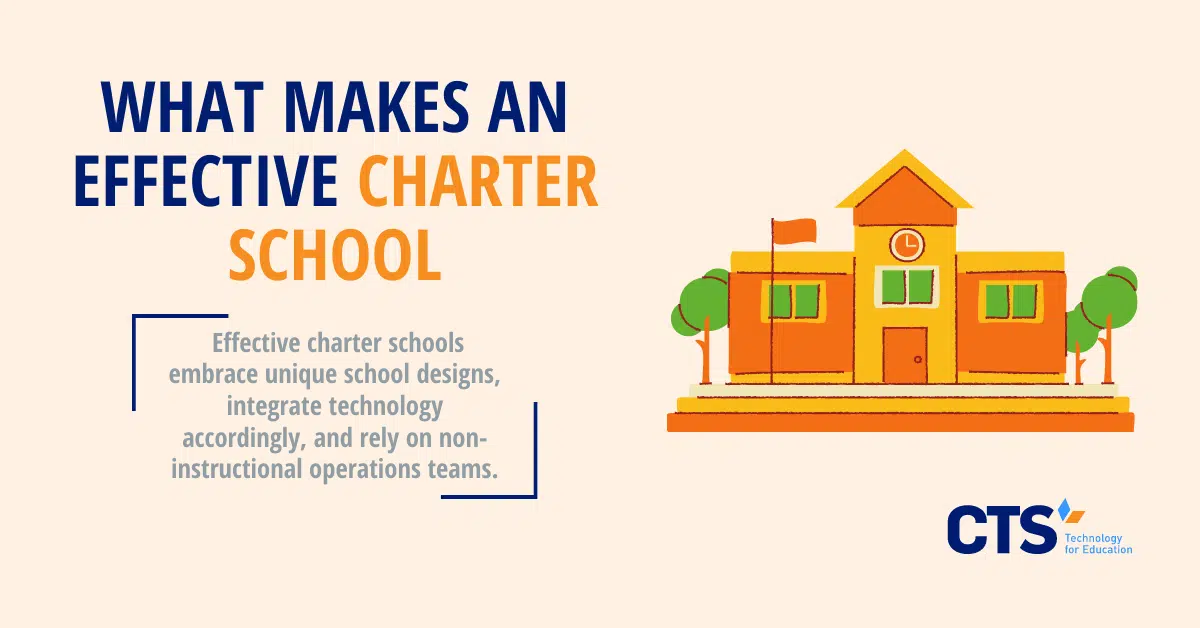Effective charter schools take advantage of the flexibility afforded by state and local laws.
In contrast to traditional public schools, charter schools often have greater flexibility to choose a specific instructional design, staffing model, and school schedule; hire the teachers and support staff they need, and use a curriculum of their choosing.
This flexibility has allowed charter schools in many jurisdictions to experiment with novel ways of teaching students. Rather than an 8:30 AM – 2:30 PM school day, for example, many charter schools host students until 3:30 PM or even 4:30 PM, determined to maximize the amount of time students spend learning. Other charter schools ensure that each classroom includes two full-time teachers, increasing the teacher-student ratio to provide more opportunities for individual support. Still, others embrace “progressive” pedagogy, centering the students’ own thought processes and problem-solving abilities rather than a top-down model in which the teacher, alone, generates content knowledge.
Charter schools’ greater flexibility has also led many to design their schools around particular academic or extracurricular themes. Arts-based charter schools, for example, allow students to choose from among a variety of different arts electives (e.g., piano, dance, drawing, sculpture, etc.), which are further integrated into traditional instructional blocks like English language arts, math, and science. Some even organize their model around a particular sport, using athletics to drive instructional engagement, as well as create opportunities for social-emotional learning.
In addition to embracing the flexibility afforded by state and local laws, however, effective charter schools also share a number of other key characteristics that allow their students to perform at a high level. Effective charter schools embrace a comprehensive instructional design, integrate technology accordingly, and rely on a non-instructional operations team to ensure principals and teachers can focus solely on their students’ learning. By embracing each of these factors, charter schools often outperform their traditional public school peers and ultimately help positively impact student achievement.
High-performing charter schools have a specific mission that informs their instructional design.
Creating a comprehensive instructional design is crucial to a charter school’s success. A coherent instructional design touches each of the school’s grade levels (whether K-5, 6-8, 9-12, or even K-12), helps orient teachers toward the school’s overall mission, and also informs other seemingly unrelated aspects of school programming.
Rather than thinking about one grade’s instruction in isolation, effective charter school administrators look across grade levels and subject areas to draw connections between otherwise disparate instructional topics. At an arts-based charter school, for example, instructional designers look for ways to integrate arts into seemingly unrelated content areas, building upon a foundation established in previous grade levels. Similarly, a charter school organized around a specific sport, STEM, or character trait such as “leadership” repeatedly integrates the school’s more general mission into specific teaching and curriculum choices.
These efforts also impact the school’s student, staff, and family culture. The arts-based school may refer to students as “artists,” name its classrooms after successful practitioners, host multiple arts showcases throughout the year, and introduce students to local artists who embrace the mediums taught in the school. The same holds true for other school designs that embrace a content-specific mission: the more the school’s mission permeates each aspect of school programming, the more invested teachers, students, and family members become in enacting the school’s unique design.
When student recruitment season arrives, charter schools with highly specific missions often have an easier time recruiting students than those with more generalized offerings. Families with students interested in particular subject areas are often more likely to gravitate toward schools whose instructional design aligns with their student’s more general interests.
These specific missions, in turn, influence the level at which the school integrates technology into daily instruction.
One area in which the school’s mission is often most apparent is in its technology programming. The frequency and nature of students’ engagement with technology is largely dictated by the school’s more general instructional design and culture. Schools that embrace a STEM-focused model, for example, almost invariably use technology at a higher rate than comparable schools, but arts-based, sports-focused, or character-trait-oriented charter schools can also use technology to support their own unique instructional designs.
A STEM-focused school might have a robotics or coding lab where students use unique instructional hardware to enact the school’s science, technology, and engineering-focused curriculum or host science fairs that require the use of technology not often found in schools with more traditional instructional models. Arts-based schools might similarly embrace graphic design technology that allows students to create dazzling, one-of-a-kind visual displays that showcase their artistry.
The manner in which effective charter schools plan to integrate technology into their classrooms also informs the way in which they spend often scarce school funds. Schools with a STEM focus, for example, would be wise to make use of the federal E-rate bidding process, offsetting at least some of the costs that accompany an instructional model that makes heavy use of educational technology. Other school models, too, can benefit from the program, scaling their student-device ratio to ensure each student has their own personal Chromebook or other school laptop model they can use to complete academic tasks.
The greater flexibility many charter schools have to spend their funds as they see fit allows these schools to make these and other technology choices that aren’t always afforded to traditional public schools.
To support world-class instruction, charter schools often rely on a non-instructional operations team.
Finally, to support effective instruction, charter schools often rely on non-instructional team members to take all non-teaching-related tasks off of principal’s and teachers’ plates, ensuring these groups can train their sights exclusively on students’ learning.
Often called “school operations teams,” this group of individuals often includes a school operations director, an office manager, and any number of additional non-instructional team members with titles ranging from “special projects manager” to “operations analyst,” and sometimes, even more, specialized domains like “food services manager” or “technology manager.” By assigning all non-instructional tasks to a particular team, teachers no longer need to worry about fixing a student’s broken laptop, sending out an email blast to students’ families, figuring out their classroom budgets, or planning entire field trips on their own. Instead, the school operations team takes on all of these tasks, allowing the teacher to maximize instructional time.
Some of the most pivotal non-instructional domains managed by the school operations team include student recruitment, school safety, transportation, food service, finance, and human resources. In addition to a number of other domains, these workstreams often drain valuable instructional time from students and teachers, not to mention school principals who in a traditional public school often spend hours at their desks managing non-instructional priorities.
Ideally, when someone walks into a charter school, the principal isn’t sitting at their desk answering emails, reviewing a budget, or drafting a school-wide newsletter, but is in classrooms observing teachers and providing feedback on instruction. Often referred to as “coaching,” regular instructional feedback ensures effective classroom management and students’ content mastery remains at the forefront of the school’s daily operations. Without the distractions of the non-instructional tasks that often occupy traditional public school principals’ time, charter school leaders can train their sights on teacher practice and ultimately help improve student achievement.
At CTS, we help schools use technology to make the most of their unique mission.
Our organization has its genesis in helping charter schools and other education-focused organizations make the most of their technology so that they can accomplish their unique mission. Comprised of former school operations leaders and other team members with decades of experience in educational technology, we recognize the relationship between a school or organization’s design and the manner in which it uses its technology resources.
Rather than imposing a one-size-fits-all model on our partner organizations, our team begins, first, by seeking to understand the partner organization’s unique mission: what are their overarching goals, what kinds of resources does the organization have available, and how can we help bridge the gap between the two? By taking the time to ask and understand the organization’s answers to these fundamental questions, we’re able to craft unique technology solutions that take the partner organization from point “A” to point “B” in a cost-conscious, mission-oriented manner.
Our transparently priced service packages also offer different levels of support from which schools and organizations can choose, allowing leaders to make a financially responsible decision that meets their needs without the hidden costs and fees schools can encounter with other providers. We also understand that some schools might want daily troubleshooting support, while others may only require a monthly visit, help with a particularly complex technology project, or higher-level strategic support as they craft their annual budgets. Whatever the case, CTS has both the track record and technical know-how to take your school’s educational technology programming to the next level. Contact us today to learn how CTS can help your school or organization accomplish its unique mission.




